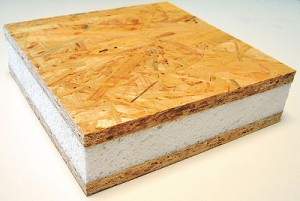I’m Truly Trying to Stop
As the everyday readers of this column know, I have been reviewing the pole building going up across the street from our home in South Dakota. If you have not been keeping up, run back a few episodes!
I’ve been away from SD for a couple of weeks, so have only been able to look at photos of the end results. I’ll keep this brief, so we can move on to other fascinating items in the world of pole buildings!
When I was first speaking with Leroy, I ask who they bought their steel roofing and siding from – it was a one location roll forming company which was not too distant from the building site. He had a complaint about their roof steel.
Leroy told me the steel on the first side of the roof they did ran perfect, the other side “stair stepped”, therefore the flying shear used by the steel company must somehow be getting out of square in the middle of the building! Builder was absolutely sure this must be the problem and they had encountered it on several recent buildings.
If this was a onetime event, I could see it being a problem of manufacturing, but when it happens multiple times and in the same fashion – I look for other reasons.
Steel roofing and siding panels are created by passing the end of a coil of flat steel through a machine which, by a series of dies, slowly bends the coil into the desired profile. As the finished product exits the die cribs, it is cut, while “on the run” to a fairly precise length, using what is known as a “flying shear”.
So why is Leroy experiencing the problem?
My best guess is the first side of the roof runs easily because they are squaring up this side of the roof, prior to the roofing application. On the other side, it is possible someone is assuming it is square, maybe just by plumbing the corner columns, instead of making sure the plane of the roof is square.
My last rant (at least for now), is on the application of wainscot panels. A sheet of 7/16
OSB was applied to the outside of the wall girts, then the wainscot and siding were applied over the top. The OSB was installed with a space of 31 inches between framing members (or 34-1/2 inches on center with 2×4 members), which is far beyond the ratings of the OSB to carry or withstand any sort of a significant load.
Almost anything which could hit the wainscot hard enough to dent it, is going to be crushing the high ribs of the steel – the OSB behind it is not going to keep the ribs from denting. If the idea is to protect the wainscot, I’m generally not buying into it, unless the protection is supposed to be from things on the inside of the building.
Instead of using a piece of steel wainscot trim between the wainscot panels and the siding above, the upper panels were merely lapped over the wainscot! Apparently the idea is this is supposed to seal tighter, however experience tells me these panels will not lay flat to begin with (they are exactly the same in profile, not swaged – to neatly interlock). With expansion and contraction, as well as the spacing of adjacent screws, there will be frequent gaps between the panels.
The question I want answered is – how was the builder able to get the steel to lay flat with the 7/16” jog at the lip of the OSB?
Ok – I’m done now. As much as I would love to be there and visually see for myself other challenges they had with this building, I believe it’s time to let it rest.








